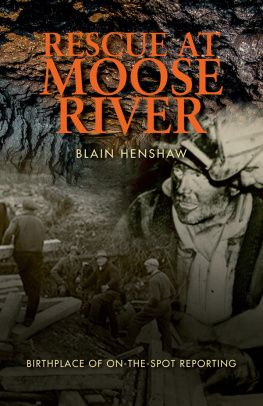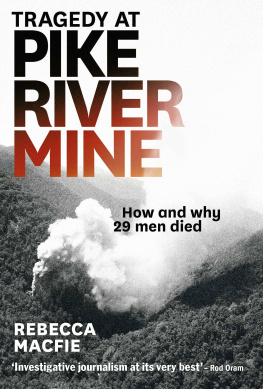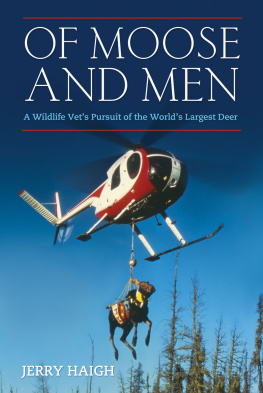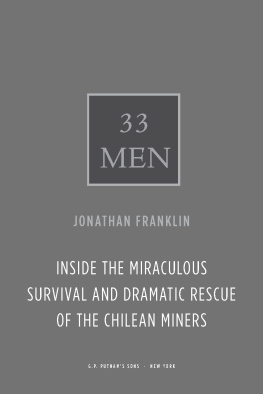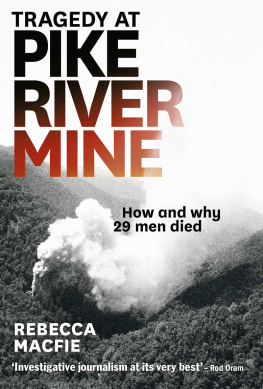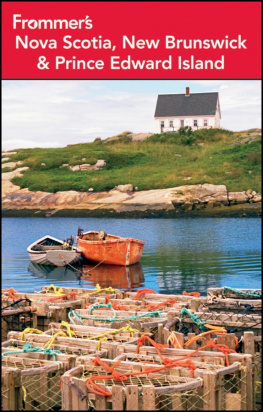Rescue at Moose River
Birthplace of On-The-Spot Reporting
Blain Henshaw
Pottersfield Press, Lawrencetown Beach, Nova Scotia, Canada
Copyright Blain Henshaw 2017
All rights reserved. No part of this publication may be reproduced or used or stored in any form or by any means graphic, electronic or mechanical, including photocopying or by any information storage or retrieval system without the prior written permission of the publisher. Any requests for photocopying, recording, taping or information storage and retrieval systems shall be directed in writing to the publisher or to Access Copyright, The Canadian Copyright Licensing Agency (www.AccessCopyright.ca). This also applies to classroom use.
Library and Archives Canada Cataloguing in Publication
Henshaw, Blain, 1946-, author
Rescue at Moose River: birthplace of on-the-spot reporting / Blain Henshaw.
ISBN 978-1-988286-16-7 (softcover)
ISBN EPUB 978-1-988286-24-2
1. Rescues--Nova Scotia--Moose River Gold Mines--History--20th century. 2. Radio broadcasting--Nova Scotia--Moose River Gold Mines--History--20th century. 3.
Moose River Gold Mines (N.S.)--History--20th century.
I. Title.
FC2349.M66H46 2017971.622C2017-902769-7
Cover image: Nova Scotia Archives and Records Management.
Cover design: Gail LeBlanc
Pottersfield Press gratefully acknowledges the financial support of the Government of Canada through the Canada Book Fund for our publishing activities. We also acknowledge the support of the Canada Council for the Arts and the Province of Nova Scotia which has assisted us to develop and promote our creative industries for the benefit of all Nova Scotians.
Pottersfield Press
83 Leslie Road
East Lawrencetown, Nova Scotia, Canada, B2Z 1P8
Website: www.PottersfieldPress.com
To order, phone 1-800-NIMBUS9 (1-800-646-2879) www.nimbus.ns.ca
Printed in Canada | 
|
Pottersfield Press is committed to preserving the environment and the appropriate harvesting of trees and has printed this book on Forest Stewardship Council certified paper.

This book is dedicated to my siblings
Maxine, Stearnes, and Vaughan
and
to the memory of our late brother Blair.
Foreword
Early in my broadcast career, I did my first live on-the-spot news report from a house fire in rural Lunenburg County, Nova Scotia. It was a frosty day in early December 1966 and I was headed across country to my home in the Annapolis Valley. When I reached Baker Settlement I was shocked to see a farmhouse fully engulfed in flames. No firefighters were yet at the scene.
I stopped and ran across the road to a neighbouring home a couple of hundred yards away. I banged on the door and asked the sixtyish couple who answered if they knew whether there was anyone in the burning house. They said no, the owners, a more elderly couple, had escaped and were now with them. They had immediately called the local volunteer fire department and as we spoke, we could hear the sound of sirens getting closer.
With that assurance, I identified myself and asked if I could meet the couple who were losing their home. I spoke to them awkwardly and briefly, learned their names, and saw that, although in shock, they were safe and sound. They told me there were no other occupants of the home, now an inferno.
As two fire trucks arrived, I asked the homeowners if I could use their phone to call CKBW, the Bridgewater radio station where I worked. On paper and with a pen, both borrowed from their kitchen, I wrote a short report describing the fire, the location, the fact that firefighters had just arrived on the scene, and the names of the couple who had safely escaped.
I phoned the station, read the report live on air, and then watched as we all stood by helplessly as the farmhouse burned to the ground. There were tears and sobs from the elderly couple who were losing their home. The firefighters could only contain the blaze and spray water on it to prevent the fire from jumping across to the neighbouring house. Within an hour, it was a pile of ruins.
After expressing my sympathy on the loss of their home and thanking the other couple for their hospitality and use of their phone, I went back to the car and continued on my way. My emotions were mixed and my adrenalin was pumping wildly. On the one hand, I felt sick to my stomach and heartsick for the couple who had lost their home; on the other, I was exhilarated from the excitement of broadcasting a live report from the actual site of a news event, sad as it was.
As I drove on toward the Valley, my thoughts went back to something my mother had told me when I was just a boy, hoping to someday become a broadcaster. It was from her that I had learned of the Moose River Gold Mine cave-in and rescue. She had told me about it in the mid 1950s when I was an adolescent. We had been listening to a Toronto-based program on CBC radio and the announcer was J. Frank Willis.
Knowing of my interest in broadcasting even at that young age, my mother told me she had known Willis in the early 1930s when she attended business college in Halifax. A Haligonian, Willis was then an upstart broadcaster at CHNS, which was affiliated with the Canadian Radio Broadcasting Commission, which later became the CBC. She told me Willis had achieved national and international recognition as a broadcaster for his live reports from the site of a gold mine cave-in and rescue of some trapped men at Moose River, in a remote area of Halifax County, about seventy miles northeast of Halifax.
Stories of mining disasters and people trapped underground have always intrigued the public and I was no different than anyone else, so I asked her to tell me more about what had happened at Moose River.
She explained that three men had been trapped by a cave-in after they had gone into the rundown mine to assess it for possible sale. They were trapped there for ten days.
In addition to Williss landmark broadcasts from the mine head to the world, she explained that another Nova Scotian, Wilf Carter, had written and recorded a song about the cave-in and rescue. Music and broadcasting have always been my first loves, so I have been intrigued by the Moose River story most of my life.
Over more than fifty years in broadcasting and communications, I came to realize that what had happened at Moose River was really two stories one, a human interest story; the other, a story of how a broadcast pioneer sparked a whole new era in journalism. Rescue at Moose River: Birthplace of On-The-Spot Reporting tells how these two events came together and made history in the backwoods of Nova Scotia more than eighty years ago.
The Cave-In
My God, there are three men down there and the whole thing has caved in!
Those were the anguished words of seasoned hardrock miner Ronald MacLean when he broke the news to Felix D. Henderson, manager of the Moose River gold mine. It was almost midnight, Easter Sunday, April 12, 1936, as MacLean raced through the cold and snow-driven spring night to inform the manager. Henderson lived near the mine and was a partner in the company that owned it.
The men trapped underground that night were Dr. David E. Robertson of Toronto, age fifty-two and married with two sons, a nationally prominent surgeon and diagnostician specializing in childhood ailments. He was the chief surgeon at the Toronto Hospital for Sick Children where he had helped scores of children recover from the ravages of polio. Robertson was accompanied by one of his partners in the mining venture, thirty-year-old Toronto lawyer Herman R. Magill, and their employee, Alfred Scadding, the forty-two-year-old timekeeper at the mine.

